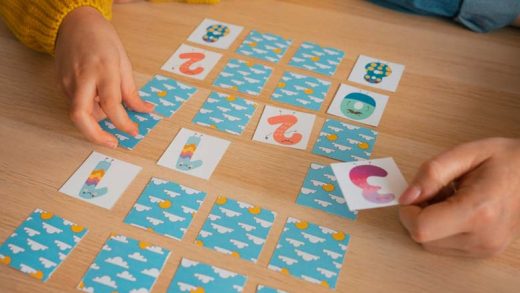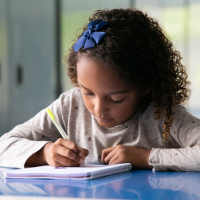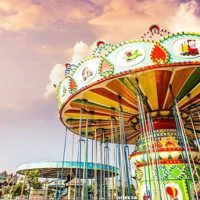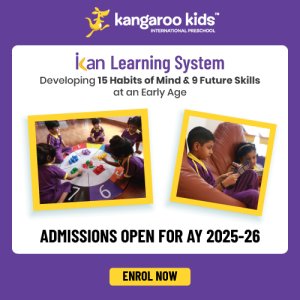Parents tend to confuse learning difficulty with physical disability. It is important to understand learning difficulties. You need to know how to identify and support your little ones. You may get frustrated when your child lacks some skills he/she should have at his/her age. Just sit back and analyse your child. They might be facing difficulties that are even beyond their control. Identifying and diagnosing can do wonders.
A learning disability causes learning difficulties. Learning disability is a neurological disorder. In simple terms, a learning disability results from a difference in the way a person’s brain is “wired.” Children with learning disabilities are as smart as or smarter than their peers.
Exceptional people like Leonardo da Vinci, Alexander Graham Bell, Albert Einstein, Bill Gates, Thomas Edison, and Louis Pasteur had learning disabilities. There are even actors who suffer from learning disabilities. As mentioned, they may struggle to read, write, spell, reason, recall, and organise. If these children are left to figure things out alone or are taught conventionally, they may feel left out.
Learning disability symptoms
Learning disability mostly develops at a very young age. Many fail to diagnose it at a young age. They might then face trouble in school, relationships, and work.
Some children might face difficulty in reading, writing, or coordinating things, which is normal and gets better with age and time. If your child is not showing any progress, consult a healthcare provider.
Below are some common learning disability symptoms. They are seen among children with learning disabilities.
- Difficulty with reading or writing
- Trouble to follow the instructions
- Difficulty in focusing
- Wrong sequencing of letters in a word
- Clumsiness
- Impulsiveness
- Facing difficulty in hand-eye coordination
- Facing trouble expressing thoughts and feelings
- Poor understanding of words or concepts.
- Non-comprehensive handwriting.
Types of learning disabilities
- Dyslexia
- Signs to look:
- Slow learning of new words
- Might not read as the kids of the same age group.
- Face difficulty in spelling and summarizing
- Reading will be a time-consuming activity and they’ll avoid it to a great extent.
- Dyscalculia
- Signs to look:
- Face problems in recognizing numbers
- Difficulty to count.
- Difficulty in learning mathematical functions like addition, subtraction, multiplication tables, etc.
- Analysing patterns becomes a laborious task.
- Dysgraphia
- Signs to look:
- Writing in a straight line becomes a laborious task.
- Reverse writing of letters.
- Child may frequently face problems holding their pen or pencil.
- Confused in the usage of upper and lower case.
- Illegible handwriting
- Omission of words from sentences
- Nonverbal Learning Disabilities
- Signs to look:
- Faces difficulty in simple tasks like holding a pencil, scissors, or tying shoelaces.
- Unable to comprehend non-verbal cues and facial expressions.
- Finds visual information incomprehensible.
- Poor in judging distance and spatial relation.
- Auditory and Visual Processing Disorders
- Signs to look:
- Confuse similar-looking words
- Find it hard to follow conversations.
Dyslexia is a language-based disability. A person with it has trouble understanding written words. Children might face difficulty in reading, writing, and spelling. It may also be called a reading disability or reading disorder.
Dyscalculia is a math disability. A person with it has trouble with arithmetic and math concepts.
Dysgraphia is a writing disability. In it, a person finds it hard to form letters or to write within a defined space. Children find it problematic to translate thoughts into written words.
It is a brain disorder. It starts in the right hemisphere. It causes problems with visual-spatial, intuitive, and holistic processing. It also affects organizational and evaluative functions.
This disorder does not mean that your child can’t see or hear properly. In simple terms, their brain does not comprehend the audio and visual cues in the usual way. You may say to your child. “Look in the pocket”. He might hear it as “Look in the socket”.
Causes of learning disability
The causes of learning disability mainly lie in abnormal neurological functioning. This abnormality can occur before a child is born, during birth, or their early childhood. Below are some other factors catering to this disability. This includes:
- Genetics or Family history. Parents with a learning disability are likely to raise the risk of children.
- Illness during pregnancy.
- Complications at the time of birth.
- Consumption of alcohol or drugs by the mother during pregnancy.
- Illness like meningitis during early childhood.
Role of Parents
Parents are vital to the lives of children with learning disabilities. When you find your child can’t keep pace with the expected age group, instead of feeling frustrated, be mindful of the existence of these disabilities. Many parents are not even aware of these disorders. Understand what is a learning disability. Look if the symptoms of learning disability persist. Do approach a healthcare professional and seek help.
Your child might be facing a very hard time. They are coping with the stress of not reaching the expected result. Be a strong pillar for them. Give emotional and mental support. Talk to the school authorities. You can use diagrams, graphics, and pictures to augment what they say in words. Break learning into small steps. Give them regular, quality feedback.
Success for students with learning disabilities requires a focus on their individual achievement. It also requires a focus on their progress and learning. This requires specific, directed, individualized, intensive remedial instruction for students who are struggling.
We, at Kangaroo Kids, ensure our students are not left out. We ensure individual care and support for children. Our teachers are equipped to embrace differences and disabilities. To learn more about our education approach, contact us today!









